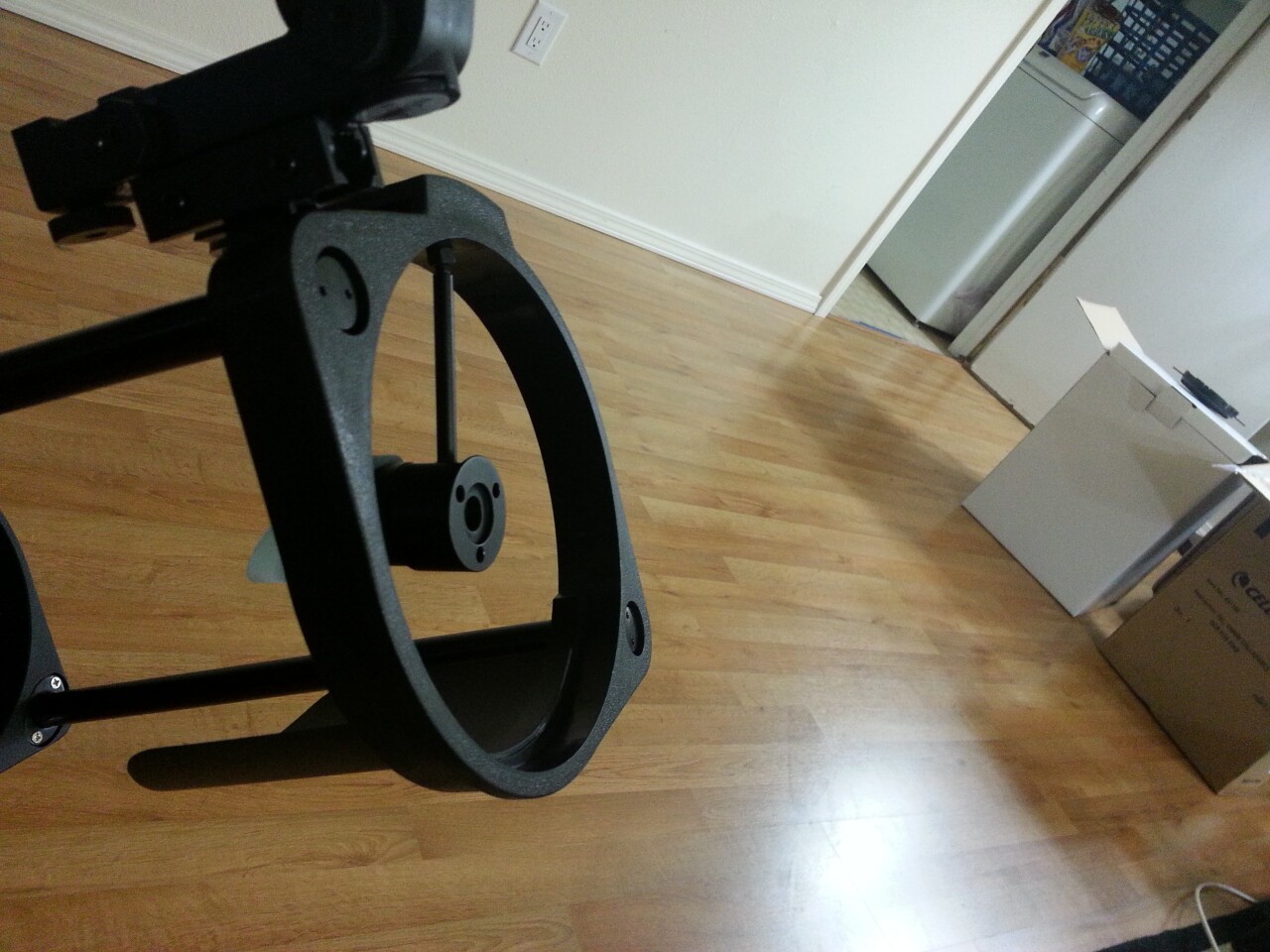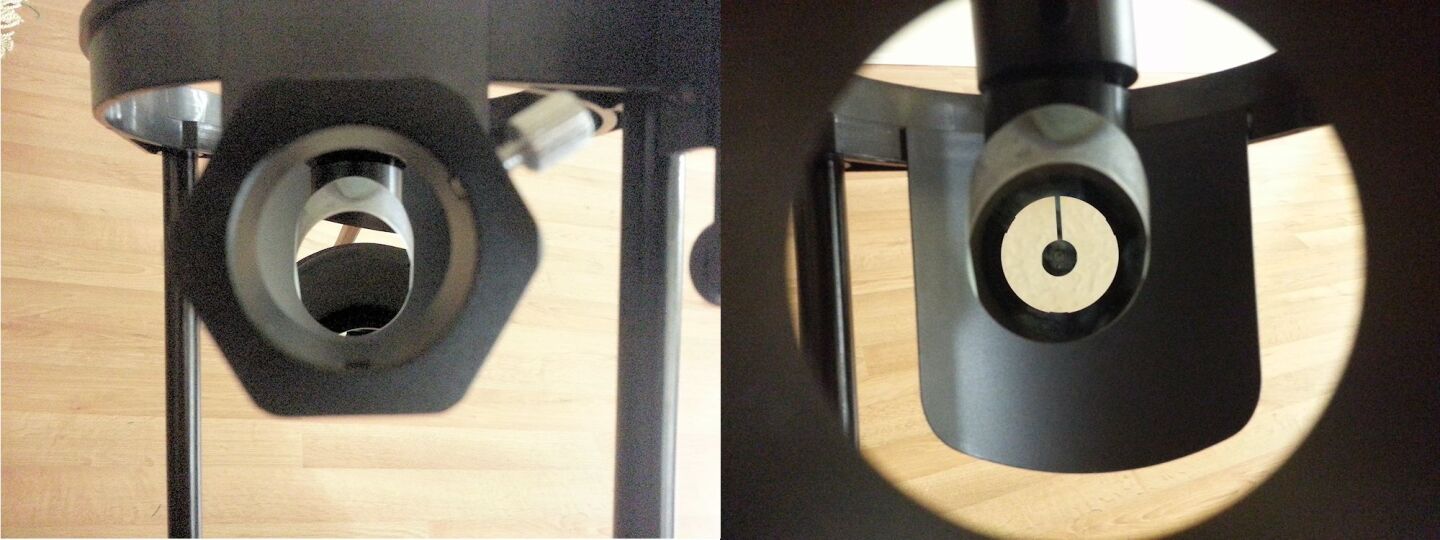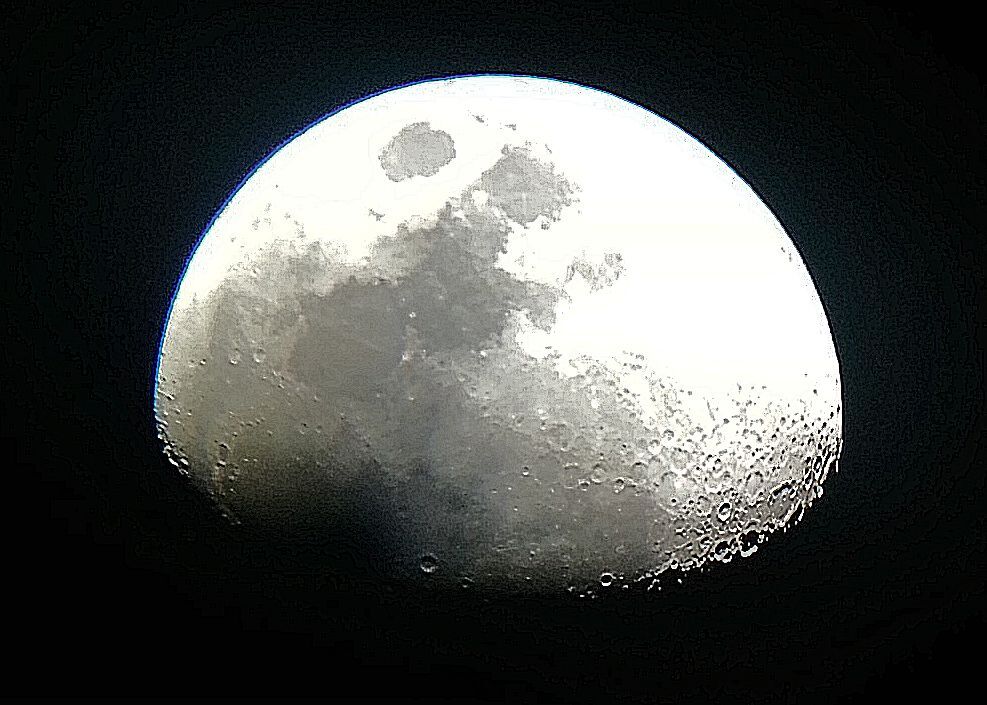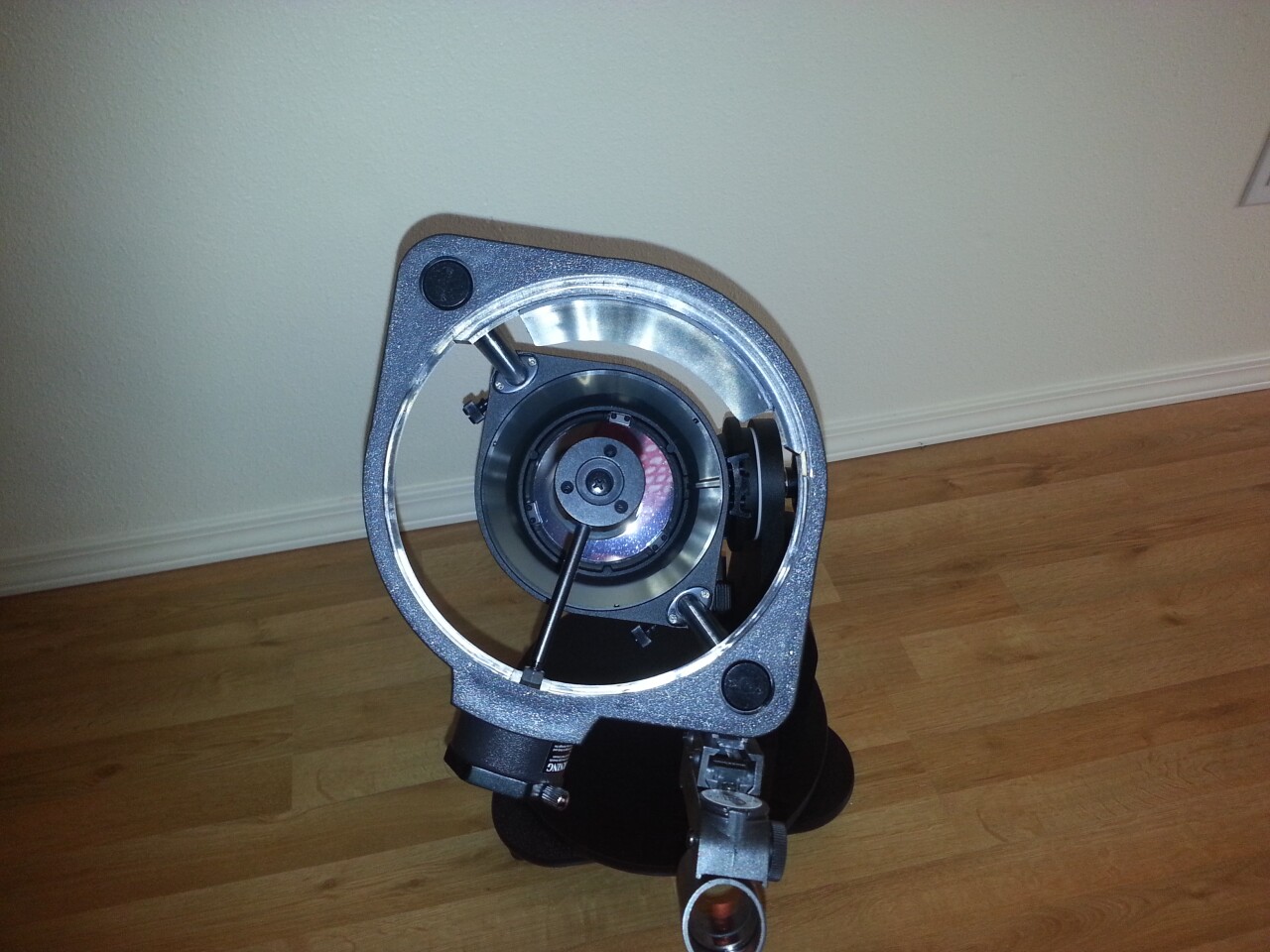Astronomers Without Borders (AWB) is a nonprofit organization aimed at knocking down national and cultural boundaries by encouraging a common interest in astronomy. Along with their message that we all share one sky, AWB is now selling a neat little grab-n-go telescope called OneSky. The scope is perfectly suited for a quick look at the heavens from the backyard, as well as for throwing in the car before heading to darker skies. I'm reviewing this scope, and it is a prize for the price.
Those of you who may remember one of my earlier amateur astronomy articles will realize that, in general, I think the average starter telescope is about as useful as a boat anchor when it comes to enjoying the skies. Between substandard optics, horribly shaky mounts, bad eyepieces, and inadequate finder scopes, it is hard to navigate the sea of inexpensive telescopes to find a good choice.
AWB OneSky
The OneSky is a good choice. At just over 130 mm (5 in) of aperture, the OneSky is larger than the usual run-of-the-mill starter scopes, which range from 50 to 114 mm (2 to 4.5 in) in aperture. Despite this, the scope is quite compact, partially because the paraboloidal mirror, at f/5, has a focal length of only 650 mm (25.6 in).

What really makes the OneSky small, however, is a collapsing truss tube that reduces the length of the telescope to 388 mm (14.5 in) in a matter of seconds. The Dobsonian alt-azimuth mount has an integrated handle, making it very easy to carry this 6.3 kg (14 lb) telescope to and from your observing point. The mount is very stable and reasonably smooth in motion.
The telescope accessories are also good solid choices. Two quality Plossl eyepieces are included, having a focal length of 25 mm (1 in) and 10 mm (0.4 in), respectively. These provide magnifications of 26 and 65 power, just about ideal for this type of scope. The fields of view for these eyepieces are 1.7 and 0.7 degrees. To get a feel for these sizes, the Moon (and the Sun, but DON'T use this scope to look at the Sun) is about half a degree in width.

The OneSky uses a Red Dot finder (also known as a reflex sight) to aid in pointing the telescope at a desired target. A Red Dot finder has a thin curved window oriented at 45 degrees. The light of a red LED is reflected from this window into the viewer's eye, where it forms a virtual image of the dot superimposed on the sky. When the dot is on your desired target, the object is centered in a low power telescope field of view. The Red Dot finder on the OneSky is excellent optically, but for me it is mounted too close to the telescope's tube. A little more room would keep my big head from banging on the tube.
Observing the sky
Finally the skies cleared after about two weeks of clouds and snow (usual for Albuquerque at this time of year), and I was able to start working with the OneSky in the wild. After setting up a new scope, one of the first things to check is the collimation, making sure that the optical elements (mirror, secondary mirror, focuser) are properly aligned. This was not even close to being true with the OneSky as I received it. It appeared that a shipping mishap had bent the secondary mirror mount from its nice square alignment.

The root cause was twofold; a heavy secondary mirror mount mounted on the end of a brass rod, and shipping packing that did not hold the secondary mirror firmly in position. These problems are easily solved, and Mike Simmons, the President of AWB, is taking action on these and other minor issues I encountered. This is his baby, and the whole intent was to supply a better portable instrument for newbies and folks wanting a scope to throw in the car. Indeed, his reaction to my comments was as if I were an alpha tester for the scope.

Being the experienced amateur astronomer and optics expert that I am, I quickly fixed the secondary mirror mount by bending it back into place with a large pair of pliers. After the repair, collimating the telescope went smoothly, resulting in the nicely centered image on the right side of the photo above. The process was aided by the thoughtful inclusion of a collimation eyepiece, a device that guides one through a rapid yet precise collimation process. By this time, the telescope had adjusted to the freezing temperatures (though I had not), so further testing could be undertaken.
Star testing involves examining the image of a star with the eyepiece inside focus and outside focus. You see a pattern of rings whose shape, brightness, and symmetry reveal most flaws that might appear in a telescope like the OneSky. I examined the brightest star in the constellation of Taurus, Aldebaran, using one of my own eyepieces to give a very large magnification (about 200x) so that the ring structures could be properly examined. The OneSky optics were nearly perfectly corrected (meaning the primary was properly paraboloidal) and had only a tiny hint of astigmatism. These optics are far better than I expected, and well above the rather dismal expectations for most starter telescopes.
Now it was time for some fun, so I pointed the OneSky at the Moon, always one of the most breathtaking spectacles in the sky. I was able to see one of my favorite lunar features, a pair of craters named Messier and Messier A in Mare Fecunditatis. Each of the two craters are about 16 km (10 miles) in size, and are separated by about the same distance. There are two long rays (about 100-130 km/60-80 miles) of ejecta generated when a small asteroid on a grazing path skipped over the Moon's surface, digging the two craters and throwing the ejecta along the rays. The craters are about 8 seconds of arc in diameter and in separation, and were easy to find at 65x. This is quite good performance for a 5 inch aperture.

Just for grins, I took a photo of the Moon by holding my smartphone up to the 25 mm eyepiece. While the result is quite overexposed, a good amount of detail appears in the band near the terminator (the shadow edge on the surface). In the original, I can see the Messier craters and their rays, which suggests that my hand was unusually steady that night. (This was the best of perhaps 20 shots.) I also took pictures of Jupiter showing its disk with a hint of the cloud bands and three of the four Galilean satellites, as well as a photo of Venus clearly showing the crescent shape.
Between the gibbous Moon and my city-edge neighborhood aglow with Christmas lights and the usual streetlights, nebulae and galaxies were hard targets, but I did spend some time looking in the vicinity of the Orion Nebula. The bright blue specks of light were more impressive than the wisps of nebulosity I could see surrounding the stars. The tale would doubtless be different in a dark sky. The Pleiades were also a wonderful field of blue-white stars, though in the light-polluted sky I could see no nebulosity.
OneSky? Thumbs-up!

The AWB OneSky, although not perfect, is a very good starter scope. The OneSky is a dual-purpose offering from AWB, providing a solid, affordable telescope while at the same time supporting their global programs. Celestron is donating its services in importing, warehousing, and shipping the telescope at the company's actual cost. The result is that AWB is able to offer the 130 mm (5 in) diameter f/5 OneSky at the very reasonable price of US$199.99, while pocketing nearly half that amount to support their good works. I recommend it with very few reservations.
Source: Astronomers Without Borders
















